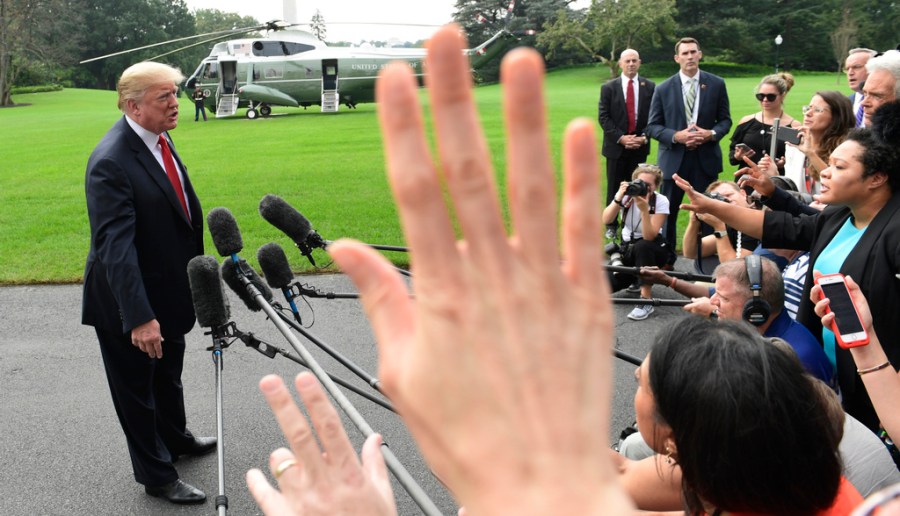
The media is filled with stories blaring details of political scandal, the immorality of politicians and seditious behavior of candidates running for president. Vicious allegations of corruption and misbehavior are standard fare as politicians are relentlessly attacked in the media.
Campaign 2024? No, this was America in the early 1800s, the era characterized by what is now known as the partisan press. At the turn of the century, what are now considered the august founders of the United States were subject to abusive attacks on their character and roles as public servants and candidates for the presidency. Thomas Jefferson, Alexander Hamilton and John Quincy Adams were portrayed as dangers to democracy.
The media consisted of newspapers and pamphlets that were mouthpieces, for all intents and purposes, owned and operated, by the political parties and powerful interests behind candidates running and serving in office. This was a propaganda attack machine designed to discredit political opponents as seditious, corrupt and immoral threats to the young republic.
In 2025 we have a contemporary partisan press on steroids. Despite a precipitous drop in the audience for network broadcast news and cable news, this media exacerbates the role of partisanship in the presentation of the news. Journalists appear regularly as analysts on broadcast and cable channels reviving the ethos of the era of the partisan press by pronouncing their opinions and version of the facts of a story.
Cable news has evolved into cable talk, dominated by panels of “experts” pontificating about the perils of the political opposition. 24/7 news is 24/7 partisan attacks. The pundit corps is dominated by former political, government and military officials with an axe to grind and a platform to relentlessly chop away at their perceived enemies.
The effect of partisanship is a massive increase in the number of Americans who cannot depend on the media to provide reporting they can trust. Gallup reports 69 percent of U.S. adults have little or no trust in the media. A great deal or quite a lot of confidence in television news is 14 percent and 18 percent for newspapers.
Surveys by the American Press Institute and The Associated Press-NORC Center show 44 percent believe information in the press is one-sided. Four in ten people believe the press is harming democracy.
In its attempt to avoid the oft mentioned impending existential crisis for democracy, the media is contributing to the distress of the average American. If “democracy dies in darkness,” the media is bringing midnight to America, the exact opposite of the Ronald Reagan television commercial from 1984.
Perhaps there is light at the end of the tunnel and there is a possible end to current era of the partisan press. In 1833 Benjamin Day introduced The New York Sun, bringing the penny press and a new epoch to communications. This was a mass audience of urban working-class citizens who would buy their own newspaper rather than the more communal readership during the colonial era. To appeal to the broader audience, the Sun was more non-partisan and carried news of the day that leaned toward stories that were sensational. The era of the first partisan press was over.
Shortly after the rise of the penny press, newspapers evolved on the foundations of modern American journalism, based on an internal industry philosophy of objectivity and fairness. Editorials presented the opinions of the publishers, but a less overtly partisan approach was central to the rise of newspapers exemplified by The New York Tribune and New York Times.
Like nature, the marketplace abhors a vacuum. This might generate the opportunity today for non-partisan content to attract a viable audience.
Is it 1833 yet? Time for a major evolutionary change in the media? Probably not. The failure of the mainstream media to rise to the occasion and report the start of the second Trump administration in a manner that is perceived as trustworthy might be the straw that breaks the camel’s back.
News coverage has been dominated with an obsession on Elon Musk, condemnation of many nominees for government positions and mockery of a variety of typical Donald Trump pronouncements such as the purchase of Greenland. Yes, all are worthy of coverage, but the lack of positive stories reinforces public attitudes regarding a partisan press.
With trust currently close to rock bottom with no impact on how the media performs, it looks like America might have to wait for 2033 for a systemic change in journalism.
Tobe Berkovitz, Ph.D., is an associate professor of advertising emeritus at Boston University.

